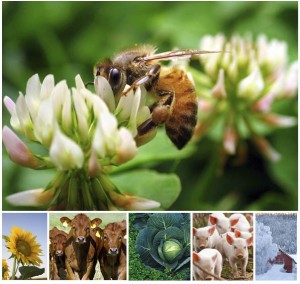CAPRI (Common Agricultural Policy Regionalized Impact) is used for simulating and predicting the impact of agricultural and international trade policies at EU policy level. For SOLID purposes, we will represent the dairy sector by two technology variants: low- and high-input dairying. The information needed must be available in FADN, or exogenously supplied consistent with the FADN data.
The Finnish DREMFIA model describes the agricultural supply-demand conditions at the regional or national level. This sector model brings the essential farm-level responses to the market level.
At farm level, we can use ORGPLAN, a farm management tool designed to assess the effects of farm conversion to an organic system. The software is adapted for evaluating the transition from a medium or high input dairy system to a low input or organic, forage-based system.
PAFAMO assesses impact of strategic choice variables in a programming model where resources (capital, land, labor) are scarce. It wants to be a tool to support farmers in assessing the impact of their strategic choices.
The more detailed process models (such as those in WP3 and WP4) must serve as input for PAFAMO and ORGPLAN, which then will provide exogenous information to sector and policy models.
To guarantee a fluent up-scaling of results from process to macro levels, the concept of typical farms is proposed.
 Since 1980’s, NJF member from Nordic and Baltic countries have been engaged in research, development and extension work in organic farming and food systems. Several NJF seminars have been arranged to highlight organic food and agriculture, bringing together experts from different branches of sience, from ecology to economics.
Since 1980’s, NJF member from Nordic and Baltic countries have been engaged in research, development and extension work in organic farming and food systems. Several NJF seminars have been arranged to highlight organic food and agriculture, bringing together experts from different branches of sience, from ecology to economics. The seminar in Denmark 2013 is part if this chain of seminars, which started in Alnarp, Sweden 2005 and was followed by Tartu, Estonia in 2009. This seminar is organized in collaboration with ICROFS – International Centre for Research in Organic Food Systems and EPOK – Centre for Organic Food and Farming at Swedish University of Agricultural Sciences.
The seminar in Denmark 2013 is part if this chain of seminars, which started in Alnarp, Sweden 2005 and was followed by Tartu, Estonia in 2009. This seminar is organized in collaboration with ICROFS – International Centre for Research in Organic Food Systems and EPOK – Centre for Organic Food and Farming at Swedish University of Agricultural Sciences.